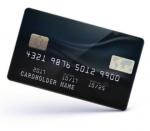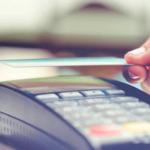Introduction to Emergency Funds
Having an emergency fund is crucial because it offers peace of mind and financial stability. Without one, a broken heater or an unplanned medical visit could knock you off course, forcing you to dip into savings meant for other goals or, worse, rack up debt. Think of it as a financial buffer, allowing you to deal with life's unexpected hiccups without derailing your overall financial plan.
In this article, we'll guide you through the steps of building your own emergency fund from scratch. We'll cover how to set realistic savings goals, assess your spending habits, and implement money-saving strategies. By the end, you'll have the know-how to not only start but thrive on your savings journey.
Why You Need an Emergency Fund
Imagine this: you've just had a fantastic weekend camping trip, you return home refreshed, only to find your car refuses to start. The repair bill is hefty, and payday is still a week away. This is precisely where an emergency fund steps in to save the day.
An emergency fund acts as a financial cushion, protecting you against unexpected expenses that life may throw your way. Whether it's a sudden job loss, urgent medical costs, or emergency home repairs, having this financial buffer ensures you won't need to rely on credit cards or loans, preventing debt from piling up.
Beyond the tangible financial benefits, having an emergency fund provides peace of mind and significantly reduces stress. Knowing you have money set aside specifically for emergencies allows you to face life's challenges with greater confidence and less worry.
Building an emergency fund is also a step toward financial independence and control. It's an empowering feeling to know you can navigate life's ups and downs without financial strain, giving you more freedom to focus on other financial goals and aspirations.
Assessing Your Savings Needs
When it comes to building an emergency fund, the first step is figuring out how much you should save. A good rule of thumb is to aim for three to six months' worth of living expenses. This might seem daunting, but breaking it down into smaller, manageable goals makes it achievable over time.
Start by identifying potential emergencies you might face. Think about sudden job loss, unexpected medical bills, or urgent home repairs. Consider your lifestyle and any unique circumstances that may require additional funds.
Next, calculate your monthly expenses. This includes rent or mortgage payments, utilities, groceries, and any other regular payments you make. By understanding your monthly financial obligations, you'll have a clearer picture of how much cushioning your emergency fund should provide.
Lastly, reflect on your financial goals. How does an emergency fund fit into your broader financial picture? Align your savings target with these goals and adjust as needed. By assessing your savings needs with a strategic approach, you lay a strong foundation for your financial resilience, ensuring you're well-prepared to handle whatever comes your way.
Budgeting to Build Your Fund
Creating a realistic budget is a crucial step toward building your emergency fund. Start by taking a good look at your current financial situation. Begin with your income—how much do you earn each month? Next, outline your basic expenses, such as rent, utilities, groceries, and other essential payments. This will give you a clearer picture of your financial landscape and help you identify potential areas for savings.
Once you've mapped out your essentials, it's time to identify and cut unnecessary expenses. Think about subscriptions you don't use, dining out too frequently, or other non-essential purchases. By identifying these areas, you can free up funds that can be redirected into your emergency fund instead.
Directing savings into your emergency fund should be non-negotiable. Treat it like an essential expense in your budget. Consider setting up an automatic transfer to your savings account right after you receive your paycheck. This way, saving becomes effortless, and you're consistently contributing to your emergency fund without having to think about it.
By making a few adjustments to your spending habits and committing to a realistic budgeting plan, you'll steadily grow your emergency fund and enhance your financial security. Remember, every little bit adds up, and consistency is key in reaching your savings goals.
Finding Extra Income
When it comes to building an emergency fund, sometimes cutting costs isn't enough. Finding ways to boost your income can significantly accelerate your savings journey. Let’s explore some practical strategies to increase your earnings without overhauling your lifestyle.
One option is to dive into the world of side hustles or freelance opportunities. Think about your skills and how they can translate into extra income. Are you good at graphic design, writing, or photography? Numerous platforms connect freelancers with clients, making it easier than ever to find gigs that suit your talents.
If freelancing isn't your thing, consider selling unused items or assets. Look around your home for things you no longer need, like that guitar you haven’t played in years or those designer clothes collecting dust. Online marketplaces provide a convenient way to turn clutter into cash, and bonus—you'll clear out space at home!
Finally, consider participating in the gig economy, which offers flexible work options that can fit around your schedule. Whether it's driving for a rideshare service, delivering food, or doing odd jobs through a task-based app, gig work is an excellent way to boost your income and contribute directly to your savings goals.
By creatively finding ways to increase your income streams, you'll remain agile in the face of fluctuating expenses and more robustly prepared for any financial challenges that might come your way.
Sure, here's the HTML code for section 6:Setting Up Your Emergency Fund
Once you’ve decided how much you need in your emergency fund, the next step is to choose the right place to keep it. Opt for a high-yield savings account, which offers better interest rates than regular savings accounts. This way, your fund will grow faster over time, providing you with a little extra financial cushion when you need it most.
To make saving effortless, consider automating your savings contributions. You can set up a direct debit with your bank to transfer a fixed amount of money into your emergency fund each pay period. Automating this process ensures you’re consistently putting money aside without having to think about it or resist the temptation to spend it elsewhere.
Another important aspect is keeping your emergency fund separate from your daily spending accounts. By isolating these funds in a dedicated account, you avoid accidental spending and maintain a clear boundary between your savings and routine expenditures. This separation not only helps in preserving your fund but also reinforces the habit of using it strictly for emergencies.
By thoughtfully setting up your emergency fund with these strategies, you ensure it's both robust and readily accessible when life throws you a curveball. Ultimately, taking these proactive steps lays the groundwork for financial peace of mind and security.
Maintaining and Growing Your Fund
Building an emergency fund is a significant accomplishment, but maintaining and growing it is equally important. Start by regularly reviewing your savings goals. As your life changes—whether through a new job, moving house, or starting a family—your financial needs might fluctuate, necessitating an adjustment in your savings target.
It's crucial to replenish your fund after any withdrawals. If you find yourself tapping into your emergency fund, make it a priority to replenish it as soon as possible. Think of it as a top-up to keep your financial safety net strong and reliable against future unexpected expenses. Prioritising the restoration of your fund should be just as essential as any regular bill or expenditure.
Once your emergency fund reaches a comfortable level, consider investment options for any surplus funds. While the primary goal is to have your money readily accessible in a savings account, any extra can be invested to potentially yield higher returns. This not only helps your financial growth but also adds a layer of resilience to your monetary planning.
By staying vigilant and proactive about maintaining your emergency fund, you not only safeguard your current financial security but also enhance your capacity to grow your wealth over time. This dual focus ensures you're prepared for life's uncertainties while continuously working towards greater financial goals.
Common Challenges and Solutions
Building and maintaining an emergency fund isn’t without its hurdles. One common challenge is the temptation to dip into your savings for non-emergencies. It's easy to justify a little spending here and there, especially when an enticing sale is on the horizon. However, reframing your mindset can make a big difference. Remind yourself of the peace of mind your emergency fund provides and imagine how it protects your long-term goals. You can also set up a smaller, separate savings account for non-urgent wants to curb this urge.
Fluctuations in income or expenses can also pose significant hurdles. Whether it's due to a seasonal job, unexpected bills, or economic changes, these variations can disrupt your savings plan. To combat this, create a flexible budgeting strategy that accounts for these fluctuations. On months when your income is higher, allocate more to your emergency fund, and during leaner times, prioritize essential payments without neglecting your savings entirely.
Finally, staying motivated and accountable is crucial. Set yourself checkpoints to review your progress and celebrate milestones along the way. Consider enlisting a friend or family member as an accountability partner or use digital tools and apps to track your journey. Remember, slow and steady progress is still progress! By keeping your motivation high and tackling challenges head-on, you can build a robust emergency fund and achieve lasting financial stability.
Conclusion: Securing Your Financial Future
As we wrap up, it's clear that an emergency fund is an essential component of a sound financial strategy. It acts as your financial safety net, ready to catch you when life's unexpected moments try to knock you off balance. By prioritising your emergency fund, you equip yourself with peace of mind and a safeguard against unplanned expenses, allowing you to tackle life's challenges with confidence.
We encourage you to take the first step toward building or enhancing your emergency fund today. Start small if you need to, but remember, the crucial part is to start. Consistency is your strongest ally, and even modest contributions can grow into a substantial safety net over time.
If you're looking for more guidance or inspiration, explore the resources available online or seek advice tailored to your personal circumstances. Consider consulting a financial advisor or using budgeting apps that can provide more tailored support. Remember, taking proactive steps today lays down the foundation for a more secure and financially resilient future.
Thank you for joining us on this journey to creating a robust emergency fund. We hope you feel empowered and motivated to navigate your financial landscape with greater assurance. Here's to a more secure and predictable financial future!
Last updated: Thursday 3rd October, 2024









